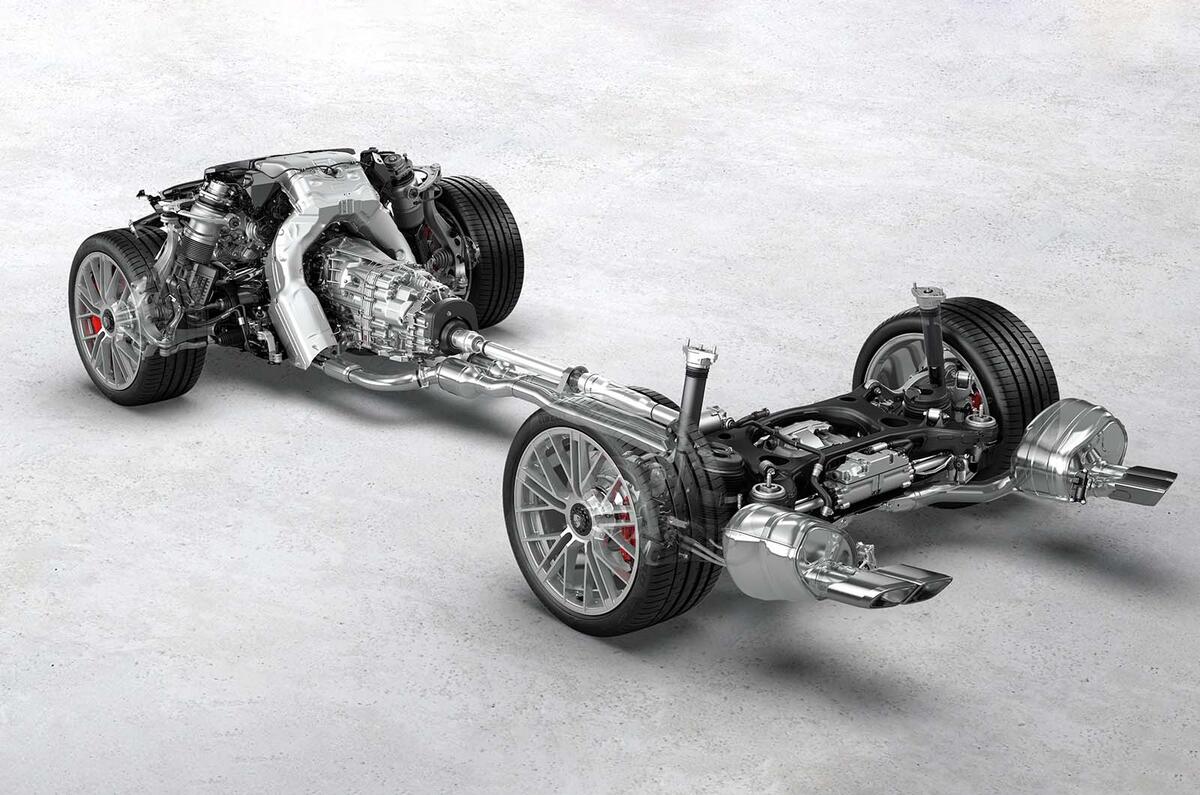Back in the day, if you wanted a car with rock-solid cornering and limpet-like grip, the trade-off would be giving up any expectation of ride comfort.
That doesn’t matter on a race track, but even the most devoted enthusiasm can fade under the relentless, tooth-loosening onslaught of rigid suspension.
Premium car makers have battled with this compromise quite successfully over the past couple of decades, using tech such as adaptive dampers, active anti-roll bars and air springs to get as close as possible to the ideal body control/comfort compromise.
One of the latest examples is the Porsche Active Ride system, announced early this year. The boast is that the system gives both the comfort of a saloon and the handling and agility of a sports car – so how does that work?
The basis of any suspension system is that springs are needed to keep the body of the car off the ground while allowing the wheels to ride bumps. To prevent the wheels bouncing up and down and lifting the tyre contact patch off the surface, dampers literally dampen that tendency and attempt to restrict the movement to following the contours of the surface and no more.
Anti-roll bars (also known outside the UK as stabiliser or anti-sway bars) are torsion bars that connect the suspension corners on the same axle and are fixed to the body. The idea is that as the car tries to roll, they resist the movement without influencing the rate – or stiffness – of the springs.
In reality, though, as one corner moves up over a bump, an anti-roll bar will inevitably influence the opposite corner.
Porsche’s Active Ride is a combination of air springs and an active damping system, which together control body movement while doing away with anti-roll bars.
Instead of being mere passive telescopic tubes that resist being extended or compressed, the active dampers have hydraulic oil pumped around inside them under high pressure to control the compression – or bump – and rebound of the suspension as the wheels ride the road’s contours.
The control system measures the vertical acceleration of the wheels and body movements, then computes how much force to apply to each damper and when.
The dampers’ active qualities are powerful enough, says Porsche, that in theory they could replace the air springs altogether and suspend the car. Their speed of response is fast, reacting at 13 times per second (13 hertz), but, as other manufacturers have found in the past, a fully active, springless suspension would consume unacceptable amounts of energy.
Instead, the usual twin-chamber air spring has been downgraded to a single chamber, saving weight in the process. Although not fully active, the overall system also has the capability to keep the body level under hard braking or acceleration as well as controlling roll and body movement in cornering while maintaining a decent ride.




Join the debate
Add your comment
Read like half an article, it concluded very quickly?, would be nice to see this tech transfer down to what us mortals have to drive everyday.
All this, to finally match a Citroen Xantia Activa from '94 - '01, 18,000 made, which beats a 911 GT3 in the' Moose Test' accident avoidance manouvre. And is also capable of being set to 'lean into' corners.
What this article fails to mention is that the new Porsche system, as available in the 2024 Panamera (972), will lean into corners much like a bike rider. It can also preven the front diving under hard braking and the nose lifting whch accelerating. I for one am looking forward to checking it out when my local dealer gets the new Panamera Turbo in :-)